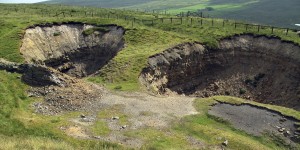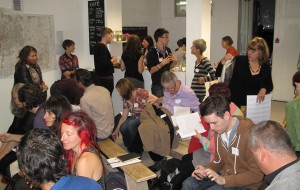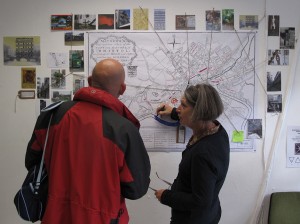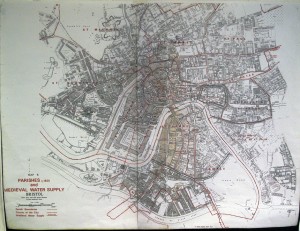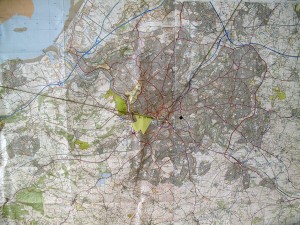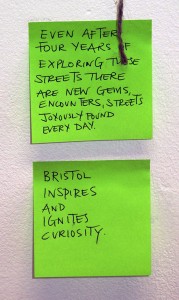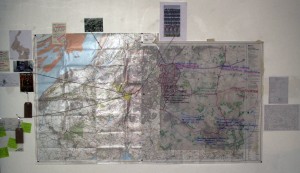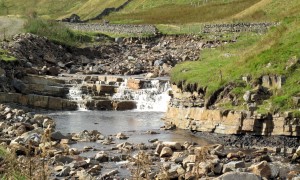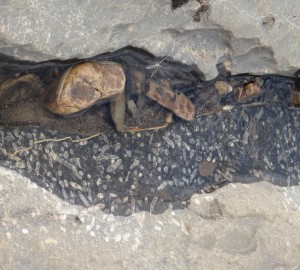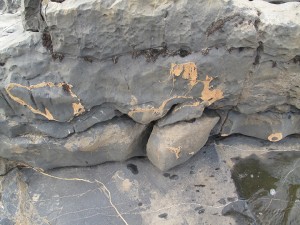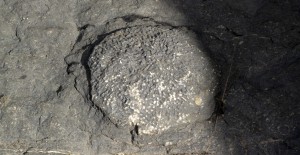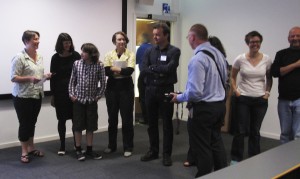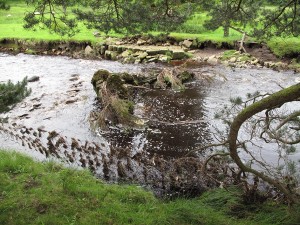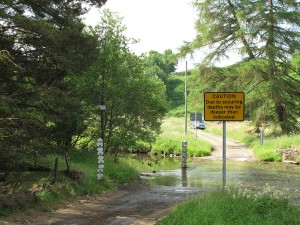“Reflections (polyverse)”
Well I suppose ‘happy New Year’ would be a good start, although I’m not sure it’s going to be given the present state of things.
Be that as it may, below are some notes I’ve been working on.
Introduction
Cathy Fitzgerald introduced me to the work of George Lakoff, some of whose ideas are explored below. Lakoff is an American cognitive linguist and political analyst, who has drawn together insights from disciplines including cognitive linguistics, cognitive psychology and recent neuroscience, to show how our brains develop frames in order to understand our life worlds and why, as a result, it is very difficult for most people to absorb the dramatic changes that result from our new environmental, social and psychological realities.
1. The function of ‘frames’
The significance of Lakoff’s article rests with its discussion of ‘framing’ and ‘frames’ or schemas, the “typically unconscious structures” that “include semantic roles, relations between roles, and relations to other frames”(71). These might be said to be the building-blocks that make up the mentalité of a cultural group: the collective, felt understanding that makes up the society and world in which a person lives, and determines their place within it – a worldview or outlook. Frames are what structure our thinking (and feeling) and are apparently “physically realized in neural circuits in the brain” (ibid). Words, particularly what we have referred to as ‘power words’ (‘art’, ‘society’, ‘digital’, ‘activism’, etc.) activate both their own immediate defining frame and much of the larger defining system within which that frame sits.
Lakoff insists that the fact that we “cannot avoid framing” means “there are limited possibilities for changing frames” (ibid). This is clearly a central consideration with regards to any claims to activate either ‘active citizenship’ or ‘socially engaged’ or ‘activist’ art, or indeed the supposedly radical ‘enabling’ power of the Internet. All these would need to reframe the dominant ‘bureaucratic’ framing of the world – with its practice of “speaking as and on behalf of nobody in particular and everybody in general” (Finn 1996: 167) – which is also the framing enacted by the PR and advertising of corporations such as IBM when making claims that relate to techno-science.
Lakoff suggests that to address the problem of framing it is not enough simply to introduce “new language” – a new concept or set of terms, for example – since any innovation “must make sense in terms of the existing system of frames” and “must work emotionally”. He also adds: “negating a frame just activates the frame, as when Nixon said ‘I am not a crook’ and everyone thought of him as a crook”. This understanding of the effect of negation might have important implications for academic critique, which tends to advance arguments via processes of undermining, demolishing, or negating previous conceptual positions or understandings; an approach that, in its extreme postmodern form, becomes a framing or “state of mind marked above all by its all-deriding, all-eroding, all dissolving destructiveness” (Bauman 1992: vii-viii) – an orientation underwritten by the hermeneutics of suspicion largely predicated on the thinking of Marx, Freud and Nietzsche. (An obvious exception to this tendency would be Paul Ricoeur’s ‘critical solicitude’). This might account for the fact that academic arguments usually have very little success in countering dominant attitudes and prejudices
Additionally, the academy’s emphasis on Enlightenment or ‘scientific’ notions of reason – which Lakoff cites as being dominant in public policy, science, economics and law – are undermined by what Lakoff calls: “’Real Reason’, the way we really reason”, which is “mostly unconscious (98%); requires emotion; used the ‘logic’ of frames, metaphors, and narratives … and varies considerably, as frames vary” (ibid). It is also embodied. This clearly allows one to argue that creative practices are much more ‘Really Reasonable’ than the dominant binary art/science framing perpetuated by the traditional academic position implies.
Again, what is central to our concerns here is the conclusion Lakoff draws from this with regard to issues of public debate such as climate change. The ‘rationalist’ assumption of those remaining professionals not wholly in the thrall of political ideology – those whose positions of power and authority are underwritten by their engagement in public policy making, science, economics and the law – “may believe that if you just tell people the facts, they will reason to the right conclusion” (ibid 72-73), without any regard for the need to ensure that “the facts must make sense in terms of their system of frames, or they will be ignored” (ibid 73). At present, for example, there are both massive amount of factual information about climate change and other environmental issues available and plenty of rational arguments as to how we should respond to these facts. What is lacking, according to Lakoff, are the “environmental frames” or “the (typically unconscious) conceptual structures” that people need to have in place in order to understand and act on environmental issues. This implies that the place where the concerns of socially engaged artists and active citizens should converge is in a common understanding of the need to build, and encourage action on the basis of, new framings – which Lakoff rather reductively claims are “communicated via language and visual imagery” – that are not based simply on the negation of the previous framings. As he puts it: “what is needed is a constant effort to build up the background frames needed to understand the crisis, while building up neural circuitry to inhibit the wrong frames” (ibid 74).
2. The isssue of Hypocognition
Lakoff’s definition of hypocognition as: “the lack of ideas we need” (ibid 76) seems to me – and not least in the light of his own argument about Real Reason (see above) – too reductive in its emphasis on ideas, a term framed for most of us in ways that privileges conscious reason over felt understanding. In my view this limits its usefulness to us in terms of our current project. I would suggest that it is more productive for us to understand hypocognition in terms of the inhibiting effects of the presuppositions that underpin the dominant framings in our culture. Why I’ll try to make clear below.
In the context of environmental concern, I would argue that we actually have, buried within our existing cultural heritage, all sorts of traces of the mentalité necessary to help us engage properly with the environmental crisis – very generally speaking this is what anthropologists refer to as ‘animism’ (I’m drawing here on Tim Ingold, Jane Bennett, etc.) and that Felix Guattari has rebranded as ‘ecosophy’. But if we wish to enable general access to this tacit animism in our existing cultural framings, we have both to foreground and ‘update’ those traces and to inhibit the outcome of the thousands of years spent constructing the framings of the Religions of the Book that served to ‘outlaw’ animist mentalités in the West and Middle East (albeit never entirely successfully). That is to say we have to understand and address the major religious/cultural mentalité and framings predicated on the presuppositions of monotheism – as a psychosocial mentalité rather than as theological dogma – a mentalité that the culture of Enlightenment science inherited in a radical secular form (Gellner 1992: 94-95).
This is why, arguably, a historical period marked by increasing concern to find new forms of understanding that can address our environmental crisis has also been marked by a rise in political fundamentalisms predicated on the framings constructed (often without any real theological justification) on the literal reading of the sacred texts of the religions of the Book – whether these take the form of a rabid Zionism; the Christian fundamentalist zealotry of the Republican Tea Party, or Islamic terrorist groups fighting for the universal imposition of Sharia Law. Within the dominant secular monotheism of our culture of possessive individualism the three most powerful framings are economic fundamentalism or capitalism – the belief that economic values are the ultimate framing – and techno-scientism and aestheticism, which as a pairing sustain themselves through a binary process of mutual antagonism that masks a mutual interdependency.
By ‘scientism’ or ‘techno-scientism’ I am referring to belief in the unlimited efficacy of techno-science. Namely, to a pervasive, largely unconscious, deeply felt belief in, relationship with, and desire for, a particular way of life predicated on unlimited and unending, technologically underpinned and enabled, consumption. A world of consumption in which techno-scientific innovation is also presented as, simultaneously, the basis for unlimited economic and personal growth; the cornerstone of both social aspiration and social cohesion and; equally simultaneously and paradoxically, the solution to environmental dis-ease resulting from over-consumption. This tangle of contradictory and logically unsustainable beliefs is now integral to our culture of possessive individualism and is endlessly promoted in the name of individual ‘choices’, ‘identities’ and ‘lifestyles’. These are in turn glossed by a culture of aestheticism mediated by techno-design that is increasingly indistinguishable from the virtual world created and sustained by the advertising industry. This conflation is facilitated by the fact that possessive individualism requires us to take as given that creativity or originality are exclusive to, and owned by, a unique individual, and is neatly illustrated by Charles Saatchi’s role in the exploitation of contemporary art to lend a ‘radical’ credibility to the culture/advertising nexus necessary to Margaret Thatcher’s ‘popular capitalism’.
The above scenario, in which scientism and aestheticism are, through the reciprocity of techno-science and the psychology that elevates the application of aesthetics to techno-design, ultimately mutually reinforcing, also helps underpin not simply our politic life and social institutions but a more fundamental “complex of assumptions about personhood, about nature and about society” (Leach 2007: 100). The role attributed to novelty and innovation in contemporary art, when mediated through conspicuous consumption and techno-design is, as already indicated, central to this scenario. Possessive individualism, which in contemporary Western culture is ultimately inseparable from aestheticism as understood here, is also the antithesis of the inclusive, ecosophical conception of care towards which we must now move in order to survive.
Like scientism, aestheticism is intrinsic to the dominant global culture, predicated as it is on the binary thinking of a now secular monotheistic mentality. Aestheticism is understood here as a belief ultimately predicated on the artist seen as “Aesthetic Adventurer”, a personage elevated above “the common run of humanity” (Morgan 1989: 16) whose ‘bohemianism’ (as it appears in the popular imagination) can be used to glamorize the pathological elements of possessive individualism. While techno-science is equated with truth and utility, with the supposedly ‘objective’ delivery of serious knowledge, and with economic prosperity (through its relationship with technology); art as its aesthetic ‘other’ is both marginalized and elevated as offering individuals “the possibility … to make visible the unseen (or deleted) dimension” of work and of a unique ‘self’ (Leach 2011:145). This possibility is, however, recuperated for the market through the processes by which techno-design, through referencing the aesthetic appearance of art and the aura of ‘uniqueness’ this is presumed to bestow, as a matter of life-style choices.
3. Ways forward?
In terms of our concerns, I would locate all the above to the view that certain aspects of contemporary art practice are becoming, to quote Matthew Fuller: “no longer only art”, given that “its methods are recapitulated” and now “ooze out and become feral in combination with other forms of life” (2011: 45). Arguably, this shift is potentially transformative in ecosophical – that is psychosocial and environmental – terms.
However, how transformative will depend on reversing current exclusions predicated on dominant framing systems, since such exclusions prevent us addressing the interwoven issues of place (physical/environmental) and placing (social/personal) in their fullest senses. These exclusions always relate to issues of social power and identity on a number of levels and, following Jane Rendell (drawing on Leplanche), may be said to work in favour of the status quo by disabling, marginalizing, rendering invisible or ‘deviant’ those social groupings whose ‘minority’ framings and expectations might otherwise provoke new cultural and creative work relevant to their own civic health and continuity (Rendell 2013: 135). This situation of exclusion is further complicated by the fact that, as Jane Rendell also reminds us: “the very act of naming an emergent practice” – for example as ‘relational’, ‘socially engaged’, etc. – “makes such a term vulnerable to the process of recuperation” (ibid: 136) by dominant intellectual, social and aesthetic orders, thus denying it of its social force, (as Anna Grear argues has already happened in the case of corporate appropriation of human rights and sustainability terminologies).[1]
My contention in all this, perhaps obviously enough, is that we need to try to find ways of reframing, in more open and ‘animist’ or mycelial forms and contexts, those ‘deviant’ aspects of the creative arts and technological innovation that are not wholly oriented to, or underpinned by, notions of what is ‘virtuous’ according to the belief/framing systems of techno-scientism and aestheticism. The dilemma we are faced with would appear to be a variation of one identified by Geraldine Finn in relation to feminism. I take her to suggest that it is both understandable and politically indispensible that, as active citizens, we make claims against the system with regard to personal, social and environmental change “in terms the system recognizes as reasonable, rational, and possibly right”. But that, in addition, we take care not to start to believe in the framings that underpin the “articulated and authoritative categories, norms, and values” of that system, since these are never “commensurate with life”. And that we help ourselves to do this by understanding and acting on the truth that: “we are always both more and less than the categories that name and divide us” (Finn 1996: 171). This remains, however, a somewhat abstract rule of thumb in the context of the immediate issues that confront us.
So does Lakoff have anything more practical to offer us?
It may be useful to begin by noting that his claim that: “The economic and ecological meltdowns have the same cause, namely, the unregulated free market with the idea that greed is good and that the natural world is a resource for short-term private enrichment”; his identification of the psychological driver here as “short-term greed”, and his emphasis on causes being “systemic, not local” (Lakoff 2010: 77) parallel Guattari’s three ecologies – the personal, the social and the environmental. However, while useful, this must be understood alongside his point that: “frames become reified – made real – in institutions, industries, and cultural practices” and that these frames don’t disappear until the institutions, industries, and cultural practices do.
While the time-scales implicit in this observation are sobering, they do not correspond to those suggested by sociological analysis of the problem “inherent in any attempt to describe a new mode of knowledge production”; namely, that the status quo now does all it can to ensure that “nothing recognisable as knowledge … be produced outside of the socially dominant form” (Gibbons, Limoges, Nowotney, Schwartzman, Scott & Trow 1994: 1-2). These authors suggest that, while real change in intellectual framings may be delayed by a series of well-understood strategies used in the realpolitik of academic life, these become less effective once the generation(s) majorly invested in that status quo have died or no longer hold institutional authority.
This whole situation is further complicated, however, by the fact that normative criteria linked to ‘market success’ now dominate the education system, particularly at the highest level where it coincides with research. As a consequence notions of education predicated on a commitment to being-as-becoming – rather than as training for a professional ‘life as’[2] – are increasingly struggling to find opportunities to identify and facilitate alternative forms of praxis.
Lakoff’s principle argument in relation to such points is that we need to find effective ways to counter “the powerful conservative forms of resistance” (Lakoff 2010: 79) to what I want to call an ‘animist’ or ‘mycelia’ reframings that parallel Guattari’s notion of ecosophy. However, what is not clear from his paper is how this is to be done while avoiding an activation of the dominant framings by negating, repeating, or structuring an argument so as to counter the dominant framing.
But I need to explore recent writing on this issue of animism by Isabelle Stengers and Michael Taussig before I can think this through any further.
[1] Anna Grear Dahrendorf Symposium 2013: Panel Social and Legal Aspects of Climate Change http://www.youtube.com/watch?v=4iR6DIwTe4Y&list=PLVyW-1uzF8Dbvjd-6k8K9FumU9E1sNTSt
[2] The term “life-as” derives from the sociology of religion (see Heelas & Woodhead 2005), and refers to any pre-established categorical understanding in which being is predetermined by fixed conventions or presuppositions – whether religious or secular – or what Lakoff refers to as a framing. In my understanding here ‘life as’ stands over against the in-between-ness identified with transversality and the work of Geraldine Finn.
